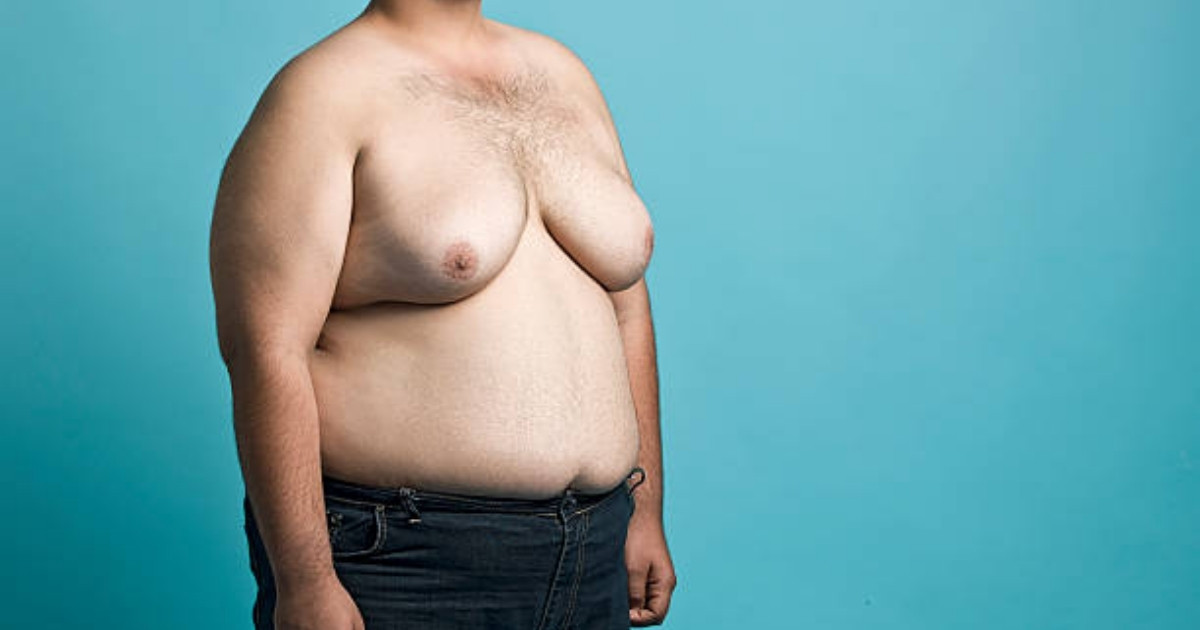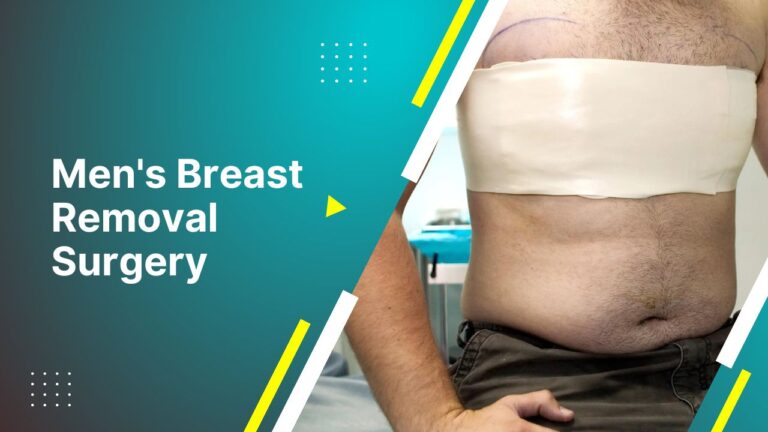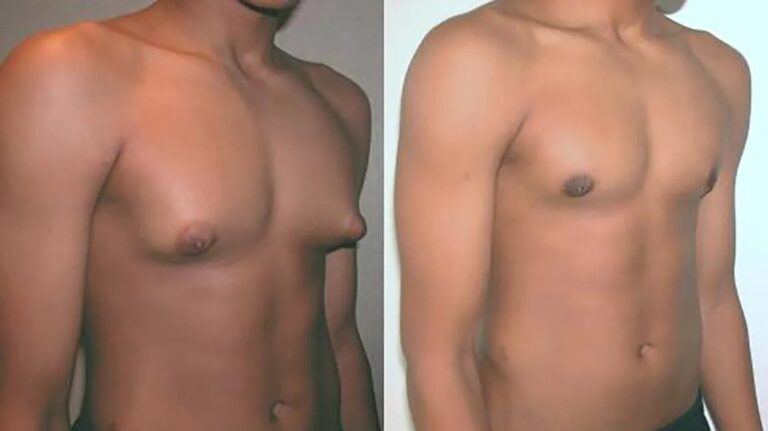Gynecomastia, commonly referred to as “man boobs,” is a condition that causes boys and men to develop breast tissue that is significantly larger than normal. While gynecomastia is often associated with older men, it is actually quite common in young boys going through puberty.
This raises the question: Is Gynecomastia Normal at a Young Age? The simple answer is yes. Gynecomastia affects up to 70% of adolescents to some degree.
This guide will cover the basics of gynecomastia, discuss what is considered normal and abnormal breast tissue development in young boys, and provide guidance for concerned parents. Understanding this condition’s prevalence during adolescence can help demystify its occurrence and reduce unwarranted concerns.
What is Gynecomastia?
Gynecomastia (guy-nuh-koh-MAS-tee-uh) occurs when the breast tissue swells and becomes larger than normal in males. It is most commonly caused by hormone changes that happen during infancy, puberty, and as men age. Gynecomastia can affect one or both breasts. Swelling can be mild and barely noticeable or more pronounced.
In most cases, gynecomastia resolves on its own without treatment. However, if it persists for more than two years after puberty, surgical removal of excess breast tissue may be recommended.
Book A Consultation With Dr Tarek Bayazid
Top-rated Plastic Surgeon For Gynecomastia in Dubai
Installment Plan Available
What Causes Gynecomastia in Young Boys?
Gynecomastia in infants and during puberty is linked to changes in hormone levels.
- Infant gynecomastia occurs when oestrogen passes to the baby from the mother before birth. Up to 90% of newborns experience some breast swelling due to exposure to the mother’s oestrogen. This usually goes away within a few weeks after birth.
- Pubertal gynecomastia happens when rising testosterone levels signal the body to produce more oestrogen. Up to 70% of boys develop some breast tissue swelling during the early stages of puberty. For most, their hormone balance will return to normal within 6 months to 2 years.
Is Gynecomastia Normal at 12 Years of age?
Gynecomastia is very common in boys around the ages of 10-14. During the early stages of puberty, rising testosterone signals the adrenal glands to produce more oestrogen. The temporary imbalance between testosterone and oestrogen levels causes breast tissue to grow.
According to research, up to 70% of boys experience some breast development during puberty . Most cases resolve within 6 months to 2 years as the body establishes normal hormone balance.
Some mild, temporary breast swelling is considered normal for boys going through puberty around age 12. However, if you notice pronounced breast tissue that persists for more than 2 years after puberty, consult your paediatrician to check for other underlying causes.
Signs of Abnormal Breast Development at Age 12
While modest gynecomastia is normal at age 12, certain signs may indicate an underlying condition requiring further evaluation:
- Swelling and tenderness confined to only one breast
- Noticeable difference in breast size
- Firm, rubbery breast tissue over 2 inches in diameter
- Persistent, pronounced breast swelling lasting over 2 years
- Signs of early puberty like pubic hair, voice changes, rapid growth
If your child exhibits any of these signs, schedule an appointment with your paediatrician to determine if further testing is needed to check hormone levels or rule out rare conditions that cause gynecomastia.
Is Gynecomastia Normal at 18?
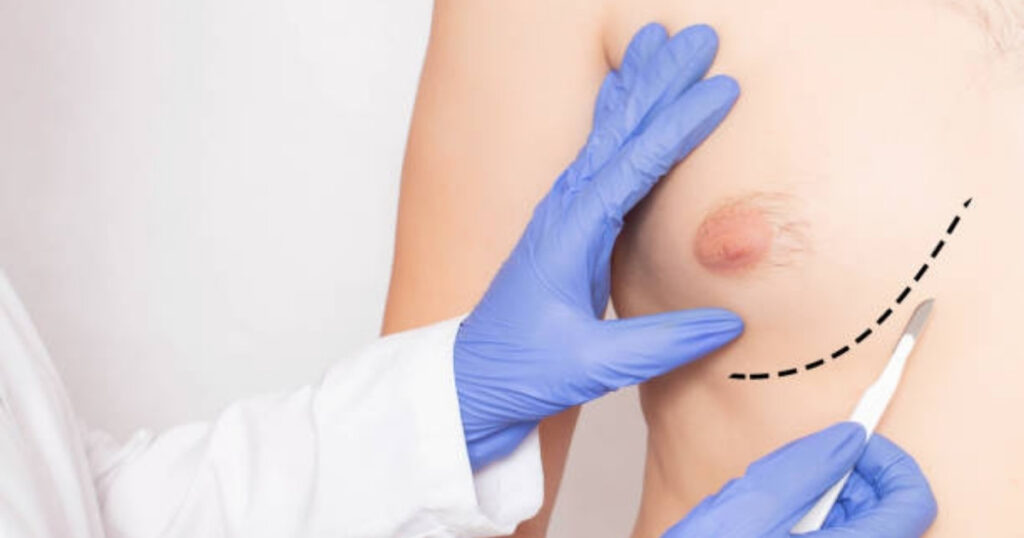
Most cases of pubertal gynecomastia in teenage boys resolve within two years after the onset of swelling. By age 18, persistent, pronounced breast tissue is less likely to go away on its own.
According to The Endocrine Society clinical practice guidelines, surgical removal of excess breast tissue should be considered for teens if gynecomastia:
- Has persisted for over 2 years after the onset of pubertal swelling
- Is causing significant physical discomfort or psychosocial distress
For young men over 18 still experiencing bothersome gynecomastia, there are effective surgical solutions to remove the excess glandular tissue for a flatter, firmer chest contour.
Available Treatment Options for Gynecomastia
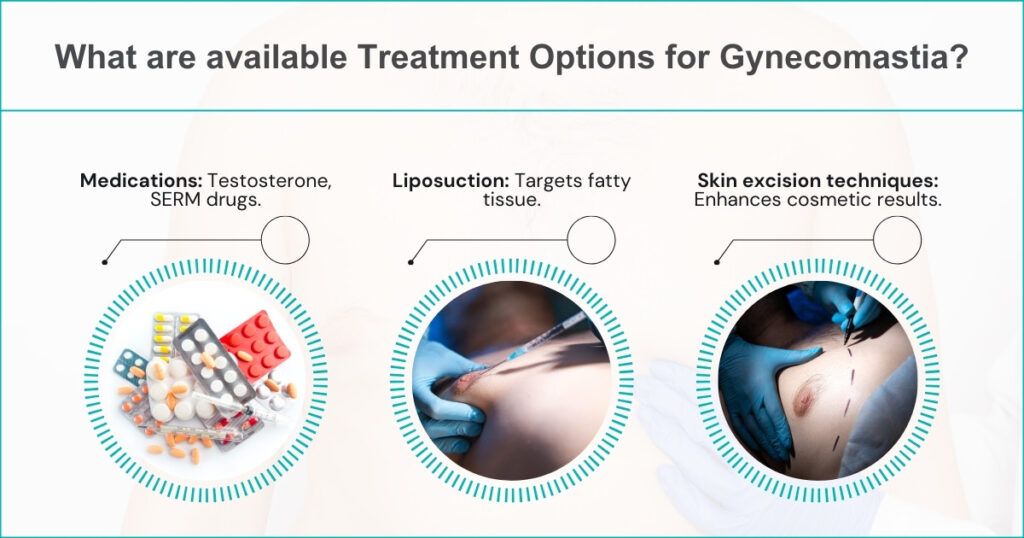
While modest breast development often resolves on its own in young boys, multiple effective treatment options are available for more pronounced, persistent pubertal gynecomastia continuing after age 18:
Medications
Medications may help shrink breast tissue for some forms of gynecomastia:
- Testosterone therapy – Boosting testosterone levels may help balance hormones
- SERM drugs – Block oestrogen’s effects on breast tissue
- Often only effective for short-term reduction in breast size
Male Breast Reduction Surgery
Surgical excision of excess breast tissue, also called subcutaneous mastectomy, is over 90% effective at improving breast contours. It is considered the treatment of choice for long-standing gynecomastia unresponsive to medications.
Gynecomastia surgery has gained prominence, offering advanced medical facilities and expertise for those seeking this procedure. Particularly in regions like Dubai, where access to top-tier medical services is available, Gynecomastia surgery in Dubai provides a reliable solution for many affected by the condition.
There are three main surgical techniques:
- Liposuction
Removes excess fatty tissue but does not remove or reduce actual glandular breast tissue. The best option for pseudo-gynecomastia or “man boobs” is caused strictly by excess fat.
- Subcutaneous mastectomy
Excises tough, fibrous breast gland tissue through a small incision at the edge of the areola. Does not remove excess skin. Minimal scarring.
- Skin excision techniques
Incisions are made around the areola to cut out and remove excess breast gland tissue and skin for optimal cosmetic results. There is some visible scarring, but the best correction is sagging.
Most patients see significant improvement in the shape and position of the chest. Scarring is minimal, and the sensation normally returns within a few months.
Is Gynecomastia Preventable?
While natural hormone fluctuations during infancy and puberty cause most breast tissue development, certain lifestyle factors have also been linked to increased gynecomastia risk:
- Obesity
- Marijuana use
- Anabolic steroid abuse
- Certain medications (ex., heart medications, ulcer meds, anti-anxiety, chemotherapy)
- Health conditions (ex. kidney failure, cirrhosis, hyperthyroidism)
Leading a healthy lifestyle may help prevent gynecomastia onset. However, some cases cannot be prevented due to normal hormone changes.
Will My Gynecomastia Go Away on Its Own?
The good news is—gynecomastia occurring due to puberty often dissipates over time without treatment.
Research shows:
- 90% of pubertal gynecomastia resolves within 3 years of onset
- Only 10% of teenage gynecomastia cases endure beyond 3 years
So allowing your body time to balance out hormonal fluctuations is sometimes the only intervention needed.
Does Diet or Exercise Impact Gynecomastia?

While medication or surgery might be necessary in some gynecomastia cases, certain lifestyle changes may also help.
Diet
Discover how different dietary choices can influence Gynecomastia with our comprehensive table, providing insights into effective nutritional strategies.
| Diet Component | Impact on Gynecomastia | Recommendations |
| High Oestrogen Foods | Can exacerbate gynecomastia symptoms | Limit intake of soy products, dairy, and certain grains |
| Balanced Macronutrients | Supports overall hormonal balance | Focus on a balance of proteins, carbs, and fats |
| Processed Foods | May worsen gynecomastia due to additives | Reduce consumption of processed and high-sugar foods |
| Omega-3 Rich Foods | Promotes hormonal health | Include fish, nuts, and seeds in diet |
| High Fiber Foods | Aids in hormone regulation and weight management | Incorporate fruits, vegetables, and whole grains |
| Alcohol | Can negatively affect hormonal balance | Limit or avoid alcohol consumption |
This table outlines the impact of various diet components on Gynecomastia. It highlights how certain foods and nutrients can either aggravate or help manage the condition, offering recommendations for dietary adjustments. Understanding these dietary effects is crucial to developing a holistic approach to managing Gynecomastia.
Exercise
Explore the varied impact of different exercises on Gynecomastia with this detailed table, helping you understand which activities might aid or alter the condition.
| Exercise Type | Impact on Gynecomastia | Considerations |
| Cardiovascular | Aids in overall fat reduction | Can help decrease chest fat, but won’t affect glandular tissue |
| Strength Training | Builds chest muscles | May make gynecomastia more noticeable initially |
| High-Intensity Interval Training (HIIT) | Enhances metabolic rate | Effective for overall fat loss, including in the chest area |
| Yoga & Pilates | Improves posture, doesn’t directly affect gynecomastia | Helpful for body awareness and control, but no direct impact on gynecomastia |
| Targeted Chest Exercises | Builds pectoral muscles | Can create a firmer look, but won’t reduce breast tissue |
| Weight Loss Exercises | Reduces body fat percentage | May help reduce pseudogynecomastia, less effect on true gynecomastia |
This table provides an overview of different exercise types and their impact on Gynecomastia. It explains how each exercise can influence the condition by reducing overall body fat, building muscle, or having no direct effect on glandular breast tissue. This information is crucial for understanding how exercise can be part of managing Gynecomastia.
While diet and exercise alone might not resolve gynecomastia entirely, making healthy lifestyle adjustments supports hormonal balance. Lady’s Chest Expansion is a type of exercise that helps women to improve their posture and strengthen their upper body. It’s like stretching your arms wide open to give your chest a good stretch.
Conclusion: Understanding Normal Versus Abnormal Breast Development in Young Boys
Modest gynecomastia is very common and normal during breast tissue development in most boys around ages 10-14. However, some cases require further evaluation and treatment if swelling lasts longer than two years after onset, differs dramatically between breasts, or causes physical or emotional distress.
For young men still struggling with bothersome gynecomastia after puberty completion, highly effective surgical and medical treatments are available, including subcutaneous mastectomy techniques that remove excess glandular breast tissue to contour the chest.
Understanding the difference between normal transient gynecomastia and abnormal, persistent cases requiring treatment is essential to support healthy development for all young men.
Dr Tarek Bayazid has over 15 years of experience performing male breast reduction surgery for gynecomastia patients of all ages with excellent cosmetic results. Book a consultation to learn about your treatment options for a flatter, more contoured chest profile.
Book a Consultation with Dr Tarek Bayazid, One of Dubai’s Premier Plastic Surgeons.
